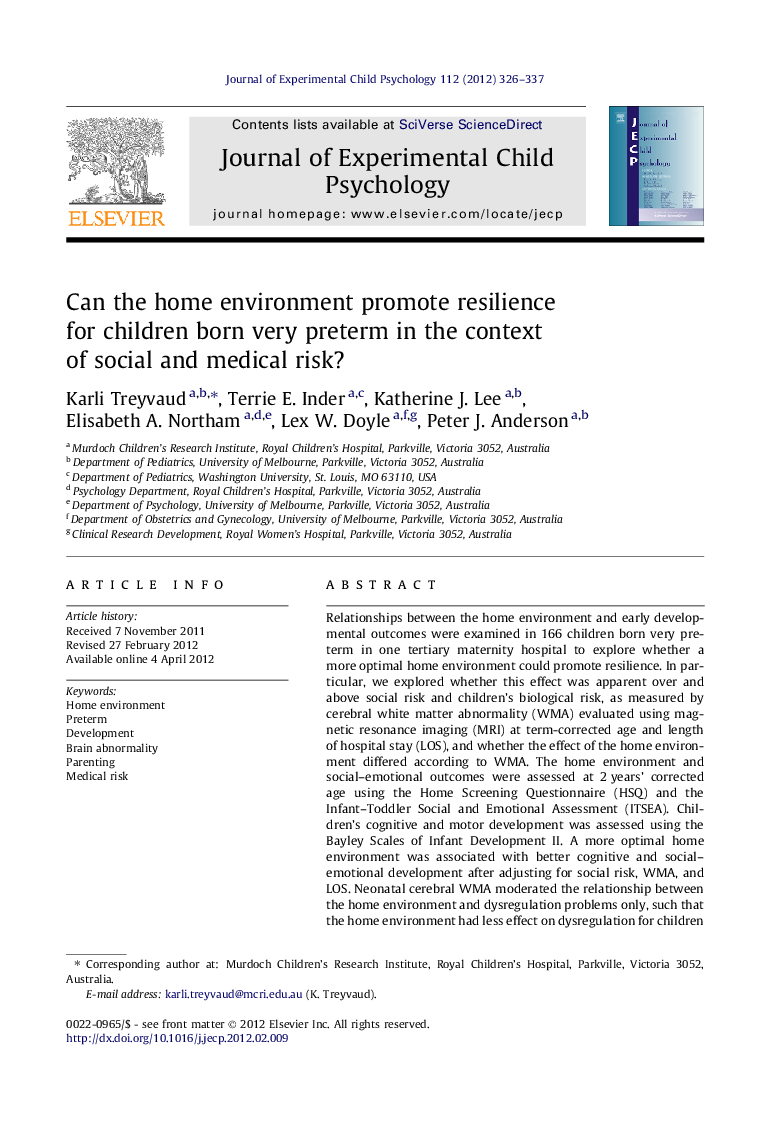| Article ID | Journal | Published Year | Pages | File Type |
|---|---|---|---|---|
| 918337 | Journal of Experimental Child Psychology | 2012 | 12 Pages |
Relationships between the home environment and early developmental outcomes were examined in 166 children born very preterm in one tertiary maternity hospital to explore whether a more optimal home environment could promote resilience. In particular, we explored whether this effect was apparent over and above social risk and children’s biological risk, as measured by cerebral white matter abnormality (WMA) evaluated using magnetic resonance imaging (MRI) at term-corrected age and length of hospital stay (LOS), and whether the effect of the home environment differed according to WMA. The home environment and social–emotional outcomes were assessed at 2 years’ corrected age using the Home Screening Questionnaire (HSQ) and the Infant–Toddler Social and Emotional Assessment (ITSEA). Children’s cognitive and motor development was assessed using the Bayley Scales of Infant Development II. A more optimal home environment was associated with better cognitive and social–emotional development after adjusting for social risk, WMA, and LOS. Neonatal cerebral WMA moderated the relationship between the home environment and dysregulation problems only, such that the home environment had less effect on dysregulation for children with mild or moderate to severe WMA. The need to support parents to create an optimal home environment is discussed.
► Examined home environment and outcomes for very preterm children. ► More optimal home environment linked with cognitive and social-emotional outcomes. ► Brain abnormalities influenced relationship between home environment and outcomes.
